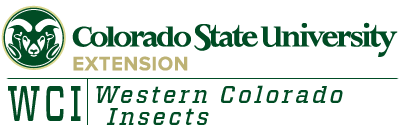Coleoptera-Beetles
| Anobiidae Spider Beetles | Colorado Insects of Interest Fact Sheet (pdf) | 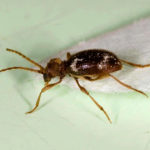 Photograph courtesy of Whitney Cranshaw |
| Apionidae Sphaeralcea weevils | These Apionid weevils were found attacking seed production fields of scarlet globemallow at Hotchkiss, CO in May 2007. This page contains photographs of all life stages and the most up to date information we have on the insect. Sphaeralcea Weevils | 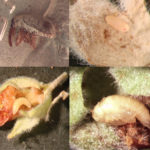 Photos by Melissa Franklin |
| Cantharidae Chauliognathus basalis LeConte Soldier Beetle | Colorado Insects of Interest Fact Sheet (pdf) | 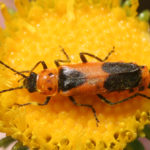 Photo by Whitney Cranshaw |
| Carabidae Cicindela punctulata punctulata Olivier Puncture Tiger Beetle (Sidewalk Tiger Beetle) | Colorado Insects of Interest Fact Sheet (pdf) | 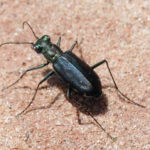 Photograph courtesy of Whitney Cranshaw |
| Cerambycidae Arhopalus asperatus (LeConte) Longhorn Beetle | Colorado Insects of Interest Fact Sheet (pdf) | 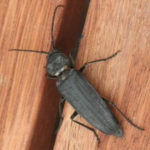 Photograph courtesy of Whitney Cranshaw |
| Cerambycidae Callidium antennatum hesperum (Casey) Blackhorned Pine Borer | Colorado Insects of Interest Fact Sheet (pdf) | 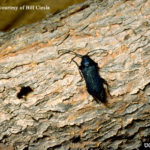 Blackhorned Pine Borer |
| Cerambycidae Megacyllene robiniae (Forster) Locust Borer | Colorado Insects of Interest Fact Sheet (pdf) | 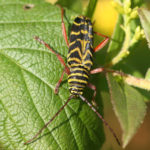 Photograph courtesy of Whitney Cranshaw |
| Cerambycidae Monochamus sp. Pine Sawyer | Colorado Insects of Interest Fact Sheet (pdf) | 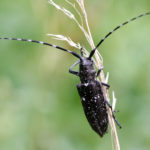 Photograph courtesy of Whitney Cranshaw |
| Cerambycidae Parandra brunnea (Saussure) Pole Borer | Colorado Insects of Interest Fact Sheet (pdf) | 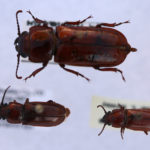 Photograph courtsey of Whitney Cranshaw |
| Cerambycidae Prionus spp. Prionus Longhorn Beetle | Colorado Insects of Interest Fact Sheet (pdf) | 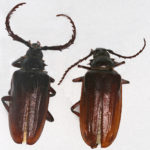 |
| Cerambycidae Tetraopes sp. Milkweed Longhorns | Colorado Insects of Interest Fact Sheet (pdf) | 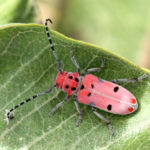 Photograph courtesy of Whitney Cranshaw |
| Chrysomelidae Altica foliaceae LeConte Apple Flea Beetle | Colorado Insects of Interest Fact Sheet (pdf) | 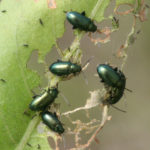 Apple Flea Beetles |
| Chrysomelidae Blepharida rhois (Forster) Sumac Flea Beetle | Colorado Insects of Interest Fact Sheet (pdf) | 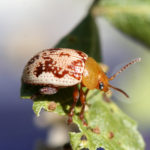 Photo by Whitney Cranshaw |
| Chrysomelidae Charidotella sexpunctata bicolor (F.) Golden Tortoise Beetle | Colorado Insects of Interest Fact Sheet (pdf) | 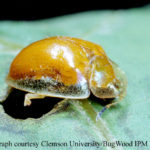 Photo by Clemson University - USDA Cooperative Extension Slide Series |
| Chrysomelidae Paranapiacaba tricincta (Say) Checkered Melon Beetle | Colorado Insects of Interest Fact Sheet (pdf) | 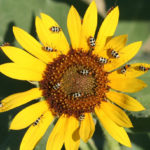 Photograph courtesy of Whitney Cranshaw |
| Chrysomelidae Trirhabda nitidicollis LeConte Rubber Rabbitbrush Beetle | Colorado Insects of Interest Fact Sheet (pdf) | 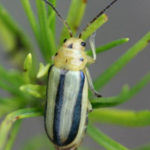 Photograph courtesy of Whitney Cranshaw |
| Chrysomeloidea Ergates spiculatus neomexicanus Casey Ponderous Borer | Colorado Insects of Interest Fact Sheet (pdf) | 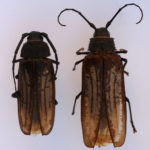 Photograph courtsey of Whitney Cranshaw |
| Cleridae Clerid Beetles (Checkered Beetles) | Colorado Insects of Interest Fact Sheet (pdf) | 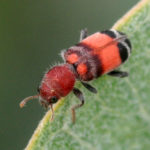 Photograph courtesy of Whitney Cranshaw. |
| Curculionidae Anthonomus consors Dietz Cherry Curculio | Colorado Insects of Interest Fact Sheet (pdf) | 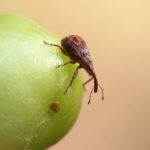 Photograph courtesy of Whitney Cranshaw. |
| Curculionoidea Orchestes alni (Linnaeus) European Elm Flea Weevil | Colorado Insects of Interest Fact Sheet (pdf) |  Photo by Whitney Cranshaw. |
| Curculionoidea Rhopalapion longirostre (Olivier) Hollyhock Weevil | Colorado Insect of Interest Fact Sheet (pdf) | 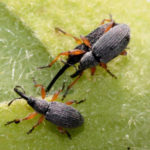 Photograph courtesy of Whitney Cranshaw |
| Dermestidae Dermestid Beetles (Hide and Carpet Beetles) | Colorado Insects of Interest Fact Sheet (pdf) | 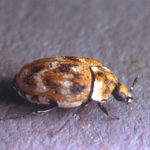 Photo by Whitney Cranshaw. |
| Erotylidae Gibbifer californicus (Lacordaire) Pleasing Fungus Beetle | Colorado Insects of Interest Fact Sheet (pdf) | 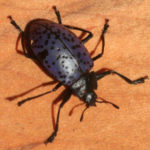 Photograph courtesy of Whitney Cranshaw |
| Hydrophilidae Hydrophilus triangularis Say Giant Water Scavenger Beetle | Colorado Insects of Interest Fact Sheet (pdf) | 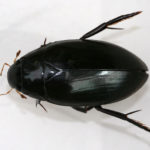 Photograph courtesy of Whitney Cranshaw |
| Lampyridae Fireflies (Lightning Bugs) | Colorado Insects of Interest Fact Sheet (pdf) | 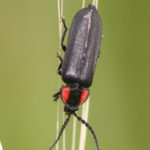 Photograph courtesy of Whitney Cranshaw. |
| Lucanidae Lucanus (Pseudolucanus) mazama (LeConte) Southwestern Stag Beetle | Colorado Insects of Interest Fact Sheet (pdf) | 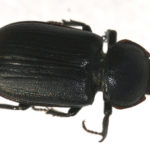 Photo by Whitney Cranshaw |
| Scarabaeidae Aphodius (Aphodiinae) Prairie Dog Dung Beetles | Dung beetle feed partly or exclusively on the excrement of herbivores or omnivores. The dung is used as a food source or a brooding chamber. These beetles were found near Grand Junction, CO in a prairie dog town and are specific to prairie dog poo. They are shy and do not like to be disturbed. Watch the video of a dung beetle on prairie dog feces | 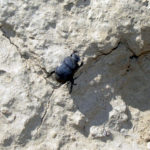 Photo by Melissa Franklin |
| Scarabaeidae Euphoria inda (L.) Bumble Flower Beetles | Colorado Insects of Interest Fact Sheet (pdf) | 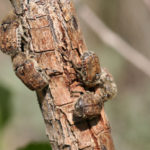 Photo by Whitney Cranshaw. |
| Scarabaeidae Polyphylla decemlineata (Say) Tenlined June Beetle | Colorado Insects of Interest Fact Sheet (pdf) | 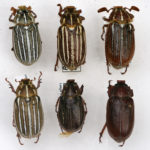 Photo by Whitney Cranshaw |
| Silphidae Nicrophorus spp. Burying Beetle | Colorado Insects of Interest Fact Sheet (pdf) | 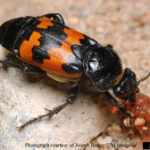 Photograph courtesy of Joseph Berger.[/caption] Photograph courtesy of Joseph Berger.[/caption] |
| Tenebrionoidea Epicauta sp. Blister Beetles | Colorado Insects of Interest Fact Sheet (pdf) | 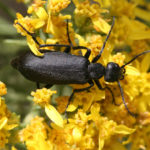 Blister Beetle 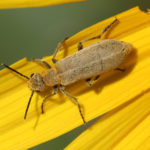 Blister Beetle |
| Folsom Era Weevils | These weevil abdomens were found in a Folsom era archaeological excavation near Gunnison, CO in the fall of 2006. Several hundred of them were found in a rock wall that was buried about 18" below the soil surface. They are in excellent condition considering the archaeological evidence suggests they may be 10,000 years old! They have been identified as Dyslobus (near) wasatchensis, a root weevil that is possibly an undescribed species. | 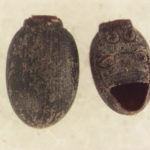 Photo by Bob Hammon |
